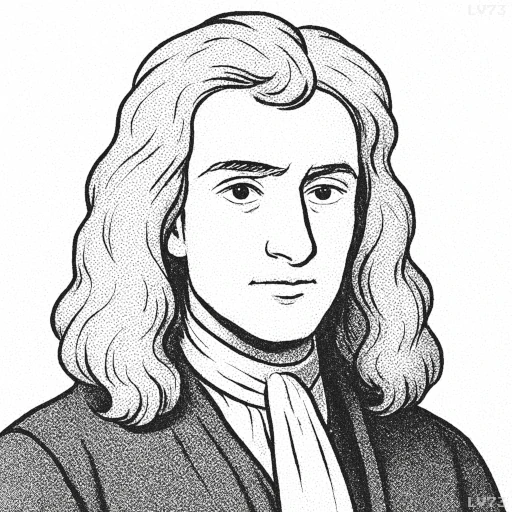“The same law takes place in a system, consisting of many bodies, as in one single body, with regard to their persevering in their state of motion or of rest. For the progressive motion, whether of one single body or of a whole system of bodies, is always to be estimated from the motion of the center of gravity.”

- January 4, 1643 – March 31, 1727
- Born in England (UK)
- Natural philosopher, mathematician, physicist, astronomer, theologian
table of contents
Quote
“The same law takes place in a system, consisting of many bodies, as in one single body, with regard to their persevering in their state of motion or of rest. For the progressive motion, whether of one single body or of a whole system of bodies, is always to be estimated from the motion of the center of gravity.”
Explanation
In this quote, Isaac Newton is explaining a fundamental principle of mechanics: the motion of a system of bodies can be understood in terms of the center of gravity, just as the motion of a single object can. This is an extension of his first law of motion, which states that an object in motion will remain in motion unless acted upon by an external force. Newton emphasizes that whether dealing with one body or a complex system, the center of gravity is key to determining its motion.
Newton’s work on the laws of motion fundamentally transformed our understanding of physics in the 17th century. Before his insights, many scholars were still heavily influenced by Aristotelian views of motion. Newton, however, demonstrated that motion could be described mathematically and applied universally, regardless of whether the system was simple or complex. The idea of using the center of gravity to describe motion is essential in fields like astrophysics, where the movement of entire galaxies or solar systems can be modeled as the motion of their collective center of mass.
In modern times, Newton’s principle continues to be foundational, especially in astronomy and engineering. For example, when calculating the trajectory of spacecraft or predicting the orbits of satellites, scientists assess the motion of objects by considering their center of mass. In the case of complex systems like earthquakes or fluid dynamics, understanding the collective behavior of particles or masses remains a central task, with the center of mass often serving as the key reference point for calculations.
Would you like to share your impressions or related stories about this quote in the comments section?
